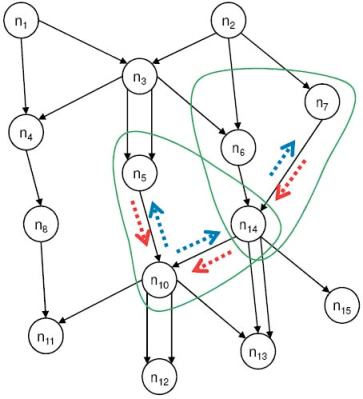Peer-to-peer (P2P) communication is centered around efficient utilization of bandwidth resources. Therefore, performing bandwidth allocation in an overlay network of peers in a distributed fashion is of paramount importance. For file distribution the problem is easier to address since each packet contributes equally to the reconstruction of the requested file at the receiver. However, this is not true in the case of a compressed multimedia presentation as each of its constituent packets contributes differently to its reconstruction quality. In addition, media packets typically feature delivery deadlines that also must be taken into consideration. In this paper, we focus on improving the utilization of the contributed upload bandwidth from individual peers that participate in a live media streaming session over an unstructured mesh overlay network. We address the problem under consideration in a completely different way from existing distributed rate allocation schemes. First, we optimize the diffusion phase of new packets without requiring per-packet explicit requests from downstream peers as typically done in mesh-pull based networks via the exchange of buffer maps. This is accomplished by formulating the problem of rate allocation as a utility optimization of the rate-distortion function at each peer individually. Therefore, utility optimization is localized at individual peers. To alleviate the problems caused by avoiding a network-wide coordination, we identify the minimum possible information that needs to be communicated distributively and this is the percentage of packet duplication. We design a statistical inference algorithm for identifying the cost of packet duplication throughout the P2P network. Based on the inference results, the algorithm provides an optimal rate for which the utility problem is separately solved. Our simulation results indicate that significant quality benefits can be achieved by the combination of the two proposed algorithms. Furthermore, we show that the network inference algorithm incurs minimum message passing overhead and is characterized by fast convergence even in dynamic networks.

Figure 1. Flow of control messages in our protocol: Rate allocation (in red) and Belief Propagation (in blue).